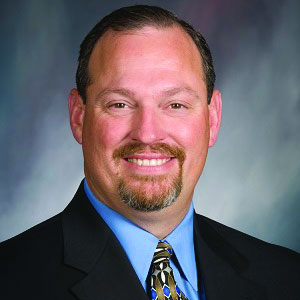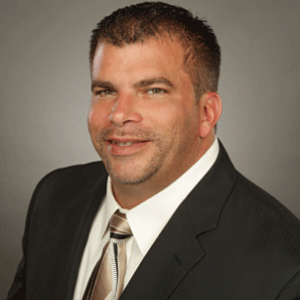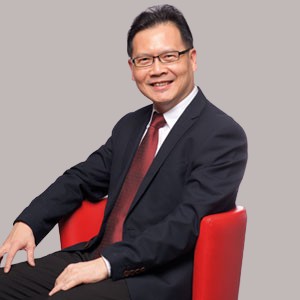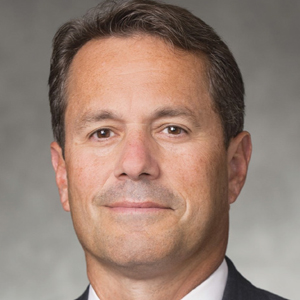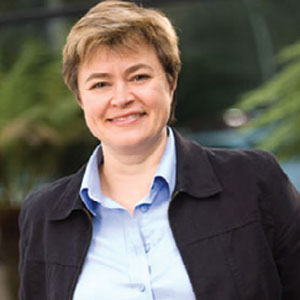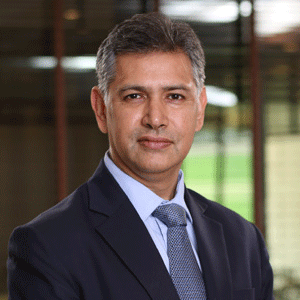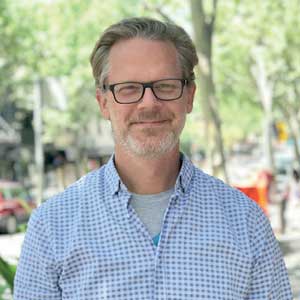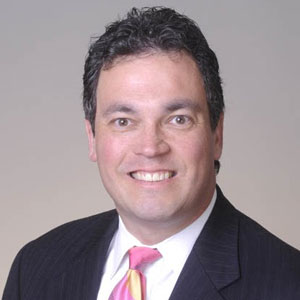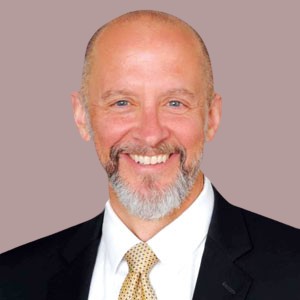THANK YOU FOR SUBSCRIBING

DataSphere: Designing Future-Proof Data Centers for AI and Beyond

 Cliff Lee, Executive Director
Cliff Lee, Executive DirectorAnd rightfully so!
The surge in AI and digital technologies is pushing data centers to their limits, particularly in heat management. With power costs a major concern, data centers must prioritize optimal Power Usage Effectiveness (PUE) and efficiency.
DataSphere tackles this challenge head-on by crafting customized solutions that meet current needs while accommodating future demands. Its focus on lower PUE, high availability and optimized performance helps clients maximize the value and longevity of their data center investments.
“We have made it our business to design and build leading-edge data centers. Our aim is to provide customers with unparalleled services in the design, construction, and monitoring of their data centers,” says Cliff Lee, Executive Director.
A recent project with a NASDAQ-listed client exemplifies the effectiveness of this methodology, particularly during an expansion from cryptocurrency to AI cloud computing businesses. Initially tasked with designing a scalable data center with up to 150 racks, DataSphere anticipated potential expansion to 200 racks. The project began with a Computer Room Air Conditioner (CRAC) solution and cold aisle containment to optimize PUE within a tight five-month deadline. Everything progressed smoothly until the client requested additional high-density equipment, increasing the configuration by 20 racks. Fortunately, DataSphere’s forward-thinking design allowed for this expansion without major disruptions, incorporating 20 racks with up to 8 kW of cooling each, with an additional two months needed for procurement and installation.
The challenge intensified when the client added an Nvidia SuperPOD featuring 31 DGX H100 systems. Despite these evolving demands, the project was completed ahead of schedule. Rigorous testing confirmed the system’s resilience, achieving a PUE of 1.56—surpassing the original target of 1.7. The client’s satisfaction with the project speaks volumes about DataSphere’s dedication to delivering efficient, cost-effective solutions.
Ensuring Uninterrupted Performance
Innovating in the industry for over three decades, DataSphere understands that any oversight in backup power and cooling can lead to significant catastrophes, and designs proactively to prevent issues.
Recalling the NASDAQ-listed client’s project, Lee says, “When our client decided to include 31 DGX H100 systems, we knew that the 20.4 kW per rack load would far exceed the capabilities of the originally planned CRAC cooling system, which, according to ASHRAE TC 9.9 standards, could only support up to 5 kW per rack.” DataSphere swiftly incorporated 12 units of in-row cooling units with (N+2) into the layout and containment, modifying the necessary forms to accommodate the increased of CEE-Forms required for each feed of these servers. It also adjusted the existing Power Distribution Units (PDU), adding more power points for these high-density servers.
Implementing in-row cooling units and CRAC systems ensured optimal performance. The CRAC system handled the return air from the existing 4 kW per rack servers, while in-row cooling units managed the heat from the DGX machines.
DataSphere closely monitored the situation to ensure efficient management of hot air returning to the CRAC units, maintaining a constant temperature of around 22 degrees Celsius for all other servers.
On the power front, DataSphere’s fourth-generation Centiel modular UPS system selection proved invaluable. With its Decentralized Active-Redundant Architecture (DARA), the modular UPS system allowed seamless expansion by adding frames and modules without altering the entire system.
“We completed the entire expansion with three sets of 300 kW modular UPS on each feed, enabling the integration of the SuperPOD with the data center,” Lee explains. “If we hadn’t planned for future expansion and the ability to expand the UPS by frames and modules, we would have had to redo the entire infrastructure, i.e. additional costs to be incurred by the customer.”
The modular UPS system facilitated seamless expansion and ensured high availability through its Safe-Swap feature. This technology replaces faulty modules without affecting the data center’s operation, minimizing service-related downtime required.
The objective is that clients should not have to be notified that the system is down or put on bypass. There is always a risk of data loss, operational disruption, or financial loss. By leveraging modular UPS systems and innovative cooling strategies, DataSphere delivers future-proof solutions that prioritize high availability, efficiency and performance.
Four-Stages Data Center Development Process
Moving beyond the basic ‘builder’ approach, DataSphere’s process consists of four development stages.
Starting with the design phase, the team collaborates with clients to understand their specific requirements—whether they need a Tier 2 or Tier 3 data center or foresee expansion. These discussions are crucial for defining clear goals.
Detailed plans are then created, including single-line diagrams, floor layouts, hardware positioning, cold aisle containment and precise power and cooling calculations. The team conducts site surveys to assess the location’s suitability, considering factors like floor loading, floor heights, power feeds and secondary sources—from high-tension distributions to the rack itself.
The design becomes reality in the execution phase. Full-time engineers oversee the project, coordinating construction stages and managing subcontractors for piping, electrical works, raised floor installation and other scopes of works.
“We offer a complete turnkey solution, ensuring clients need only a single point of contact to provide a complete solution without the need to engage multiple vendors and managing them,” says Lee.
The project management team ensures that everything built on-site aligns with the design—no detail is too small, from vented base (VB) positions to rack placements. This oversight helps avoid errors and minimizes changes, even handling penalty clauses for delays.
“When the SuperPOD was included in the client’s plan, our initial challenge was whether the number of circuit breakers in the PDU allocated for expansion was adequate without major changes in power requirements,” recalls Lee. “We conducted internal power calculations and confirmed that increasing power to accommodate the SuperPOD was feasible.”
The Integrated Systems Test (IST) is the most critical stage. It includes a comprehensive on-site integrated system test to meet clients’ needs. DataSphere incorporates Data Center Infrastructure Management (DCIM) to measure every power consumption component for PUE measurements and Monitoring.
On the power front, DataSphere’s fourth-generation Centiel modular UPS system selection proved invaluable. With its Decentralized Active-Redundant Architecture (DARA), the modular UPS system allowed seamless expansion by adding frames and modules without altering the entire system.
“We completed the entire expansion with three sets of 300 kW modular UPS on each feed, enabling the integration of the SuperPOD with the data center,” Lee explains. “If we hadn’t planned for future expansion and the ability to expand the UPS by frames and modules, we would have had to redo the entire infrastructure, i.e. additional costs to be incurred by the customer.”
The modular UPS system facilitated seamless expansion and ensured high availability through its Safe-Swap feature. This technology replaces faulty modules without affecting the data center’s operation, minimizing service-related downtime required.
The objective is that clients should not have to be notified that the system is down or put on bypass. There is always a risk of data loss, operational disruption, or financial loss. By leveraging modular UPS systems and innovative cooling strategies, DataSphere delivers future-proof solutions that prioritize high availability, efficiency and performance.
Four-Stages Data Center Development Process
Moving beyond the basic ‘builder’ approach, DataSphere’s process consists of four development stages.
Starting with the design phase, the team collaborates with clients to understand their specific requirements—whether they need a Tier 2 or Tier 3 data center or foresee expansion. These discussions are crucial for defining clear goals.
Detailed plans are then created, including single-line diagrams, floor layouts, hardware positioning, cold aisle containment and precise power and cooling calculations. The team conducts site surveys to assess the location’s suitability, considering factors like floor loading, floor heights, power feeds and secondary sources—from high-tension distributions to the rack itself.
The design becomes reality in the execution phase. Full-time engineers oversee the project, coordinating construction stages and managing subcontractors for piping, electrical works, raised floor installation and other scopes of works.
“We offer a complete turnkey solution, ensuring clients need only a single point of contact to provide a complete solution without the need to engage multiple vendors and managing them,” says Lee.
The project management team ensures that everything built on-site aligns with the design—no detail is too small, from vented base (VB) positions to rack placements. This oversight helps avoid errors and minimizes changes, even handling penalty clauses for delays.
“When the SuperPOD was included in the client’s plan, our initial challenge was whether the number of circuit breakers in the PDU allocated for expansion was adequate without major changes in power requirements,” recalls Lee. “We conducted internal power calculations and confirmed that increasing power to accommodate the SuperPOD was feasible.”
The Integrated Systems Test (IST) is the most critical stage. It includes a comprehensive on-site integrated system test to meet clients’ needs. DataSphere incorporates Data Center Infrastructure Management (DCIM) to measure every power consumption component for PUE measurements and Monitoring.
A detailed script of procedures is prepared and shared with the client, who witnesses the entire IST process. This includes tripping the power sources, checking consequences, following events (e.g., lighting, CRAC units, UPS system), measuring servers power consumption, room temperatures, and letting the battery discharge at the committed time, and so forth.
For the NASDAQ-listed client’s project, DataSphere tested power inputs, simulating changes from external generator sources and vice-versa.
“The client monitored their hardware using live tests,” says Lee. “We ensure power sources handle all loads seamlessly, testing genset takeover and redoing tests if any anomaly occurs.”
The final stage is providing 24/7 services and maintenance to uphold the constant performance of all these supporting equipment, ensuring they continue to perform in accordance to our original design intent.
By following this comprehensive, four-stages processes, DataSphere ensures clients receive data center solutions tailored to their needs, thoroughly tested and built to withstand the challenges of an ever-evolving technological landscape.
Safeguarding Long-Term Reliability and Efficiency
Customers can rest assured with a high level of confidence, knowing their data center is built on a solid foundation.
“We offer a complete turnkey solution, ensuring clients need only a single point of contact to provide a complete solution without the need to engage multiple vendors and manage them”
“We expect that when we build a data center or server room, it should run continuously without any downtime for the next 10 years, at minimum,” says Lee. “This is based on our history of building several data centers that have operated without downtime within the first 10 years of project completion.” <
To achieve this reliability, DataSphere invests heavily in training its staff on products and solutions, from basics to advanced. Engineers are hired and trained in-house to ensure they understand the design philosophy behind each component and its relation to the entire electrical single-line design.
As an industry leader, DataSphere remains committed to staying ahead of the curve and anticipating changes that will transform the future. It understands that cooling and power will remain critical factors with new hardware developments and is dedicated to learning and adapting to serve its customers with solutions that meet their evolving needs.
In addition to staying informed about industry trends, DataSphere is mindful of the environmental and financial impacts of its solutions. In Singapore, where power is costly, achieving better efficiency and lowering PUE means significant cost savings for clients while minimizing environmental risks.
Tomorrow’s data centers will be more than just storage facilities—they will be the beating heart of our increasingly connected world. Companies like DataSphere ensure that when the future arrives, our digital infrastructure will be ready to embrace it-efficiently, effectively, and with room to grow.
For the NASDAQ-listed client’s project, DataSphere tested power inputs, simulating changes from external generator sources and vice-versa.
“The client monitored their hardware using live tests,” says Lee. “We ensure power sources handle all loads seamlessly, testing genset takeover and redoing tests if any anomaly occurs.”
We expect that when we build a data center or server room, it should run continuously without any downtime for the next 10 years, at minimum
By following this comprehensive, four-stages processes, DataSphere ensures clients receive data center solutions tailored to their needs, thoroughly tested and built to withstand the challenges of an ever-evolving technological landscape.
Safeguarding Long-Term Reliability and Efficiency
Customers can rest assured with a high level of confidence, knowing their data center is built on a solid foundation.
“We offer a complete turnkey solution, ensuring clients need only a single point of contact to provide a complete solution without the need to engage multiple vendors and manage them”
“We expect that when we build a data center or server room, it should run continuously without any downtime for the next 10 years, at minimum,” says Lee. “This is based on our history of building several data centers that have operated without downtime within the first 10 years of project completion.” <
To achieve this reliability, DataSphere invests heavily in training its staff on products and solutions, from basics to advanced. Engineers are hired and trained in-house to ensure they understand the design philosophy behind each component and its relation to the entire electrical single-line design.
As an industry leader, DataSphere remains committed to staying ahead of the curve and anticipating changes that will transform the future. It understands that cooling and power will remain critical factors with new hardware developments and is dedicated to learning and adapting to serve its customers with solutions that meet their evolving needs.
In addition to staying informed about industry trends, DataSphere is mindful of the environmental and financial impacts of its solutions. In Singapore, where power is costly, achieving better efficiency and lowering PUE means significant cost savings for clients while minimizing environmental risks.
Tomorrow’s data centers will be more than just storage facilities—they will be the beating heart of our increasingly connected world. Companies like DataSphere ensure that when the future arrives, our digital infrastructure will be ready to embrace it-efficiently, effectively, and with room to grow.

I agree We use cookies on this website to enhance your user experience. By clicking any link on this page you are giving your consent for us to set cookies. More info

